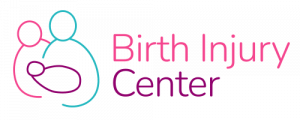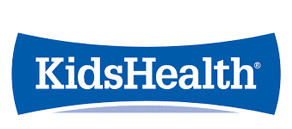Types of Cerebral Palsy
Cerebral palsy, or CP, is the most common motor disability found in children. It is caused by abnormalities to the developing brain during the course of fetal development or injury to the brain before, during, or after birth. There is no cure for cerebral palsy, but there are treatments that may be able to support a child living with it.
Home > What Is Cerebral Palsy? > Types of Cerebral Palsy
- Last Updated Date: March 24, 2025
Cerebral palsy is not a singular condition, according to the Centers for Disease Control and Prevention. Instead, it is a group of neurological disorders that permanently impact the way a person moves, maintains their posture, and balances.
There are four main types of cerebral palsy:
- Spastic
- Dyskinetic
- Ataxic
- Mixed
The types of CP are classified by the movement and body parts affected, as well as the severity of the symptoms. Those with spastic CP have stiff muscles, while those with dyskinetic CP experience uncontrollable movements, and those with ataxic CP have poor coordination and balance. Mixed CP refers to symptoms that do not fit one single type of CP and instead are a mix of types.
If you think your child's cerebral palsy resulted from medical negligence, contact Birth Injury Center today.
Spastic Cerebral Palsy
According to the CDC, around 80% of people who have cerebral palsy have the spastic form. The distinguishing signs of spastic CP include:
- Increased muscle tone
- Stiff muscles
- Awkward movement
The severity of this form of CP will depend on which part of the body is affected. Children may require leg braces or other assistive devices in order to walk.
There are three subtypes of spastic cerebral palsy called spastic diplegia, hemiplegia, and quadriplegia.
Spastic is the most common and affects about 80% of people with CP – CDC.gov
Spastic Diplegia
Spastic diplegia, also known as diparesis, primarily causes muscle stiffness in the legs. The face and arms may not be as severely affected. Parents of children with this condition should be aware that their intelligence and language skills are usually typical.
Spastic Hemiplegia
Spastic hemiplegia typically affects just the arm hand on one side of the body legs are sometimes affected, Children with this condition tend to have typical intelligence but may face speech delays.
Spastic Quadriplegia
Spastic quadriplegia is the most severe form of cerebral palsy and affects all major limbs. It usually presents with acute stiffness throughout the legs and arms. Children may also have floppy, weak necks. They will likely be unable to walk and have intellectual disabilities and speech problems.
Children with this condition can have difficult-to-control seizures, hearing and vision impairments, and other disabilities.
Dyskinetic Cerebral Palsy
Dyskinetic cerebral palsy includes three subtypes:
- Dystonic
- Athetoid
- Choreoathetoid
This category of cerebral palsy refers to cases in which people have trouble controlling the way their arms, feet, legs, and hands move, making it hard for them to sit or walk.
Dyskinetic CP causes jerky movements, slow and uncontrolled movements, or trouble with the face and tongue. A child with dyskinetic cerebral palsy could have trouble talking, swallowing, and sucking and may experience changes in muscle tone throughout the day. However, children with dyskinetic types of cerebral palsy typically have normal intelligence.
Children generally show signs of dyskinetic cerebral palsy before the age of 3, according to the National Institute of Neurological Disorders and Stroke.
Dystonic CP
Dystonic cerebral palsy causes increased muscle tone, uncontrollable movements, and problems with posture. Motions are often involuntary, according to the American Academy of Cerebral Palsy and Developmental Medicine.
Athetoid CP
Athetosis is a movement dysfunction caused by injury or damage to the basal ganglia, the area of the brain responsible for coordinating movements. Children with athetosis may have abnormal and involuntary movements. They are likely to exhibit wriggling movements or twitches that tend to worsen when attempting to control one muscle group.
Other common signs include trouble eating and drinking, inability to control facial muscles, drooling, trouble holding small objects, and fluctuating muscle tone.
Choreoathetoid CP
Chorea causes irregular movements. They may appear sudden or abrupt.
No single test is able to identify cerebral palsy, but by looking at a child’s movements, reflexes, growth, and muscle tone, it may be possible to identify these forms of dyskinetic cerebral palsy by the age of two.
Ataxic Cerebral Palsy
Ataxic cerebral palsy directly affects a child’s depth perception and balance. Those who have this form of cerebral palsy often find it is difficult to walk with stability. They may walk unsteadily and have a hard time with quicker or more precise movements, such as reaching out to catch something that is falling or buttoning a shirt.
Most children with this form of cerebral palsy are diagnosed by the time they turn two. However, health care providers may diagnose them earlier or later based on factors such as their reflexes, muscle tone, growth, development, and movement.
Mixed Cerebral Palsy
Mixed cerebral palsy combines aspects of the other forms. For example, a child with mixed CP may experience unusual movement patterns along with motor coordination issues.
Mixed cerebral palsy is a direct result of damage to several areas of the brain. Each case is unique, and the particular brain regions affected (such as the thalamus, cerebellum, motor cortex, and/or basal ganglia) will determine the effects of the condition.
It’s most common for children with mixed CP to have the symptoms of two different kinds of cerebral palsy. However, in some cases, they may show symptoms of all three.
Hypotonic Cerebral Palsy
Unlike those with the spastic type, individuals with hypotonic cerebral palsy experience muscle weakness and difficulty controlling their movements. The common characteristics of this cerebral palsy type include:
- Floppiness: One of the hallmark characteristics is the laxity of muscles, causing difficulties in maintaining proper posture and muscle control.
- Poor muscle tone: With reduced muscle tone, movements appear sluggish and less coordinated.
- Motor delays: Muscle weakness causes delays in achieving motor milestones, such as sitting up, crawling, and walking.
- Speech and feeding difficulties: Hypotonia impacts muscles involved in speech and swallowing, leading to speech delays and feeding difficulties.
Individuals with hypotonic cerebral palsy may struggle with motor skill development, coordination, and maintaining the muscle tone required for various activities.
85%–90% of CP cases are congenial. However, CP develop before birth, during birth, or after birth – CDC.gov
Recognizing Signs of Cerebral Palsy in Different Age Groups
During infancy, cerebral palsy can manifest in many different ways. Knowing the symptoms can help with early detection and intervention. Here are a few potential indications of cerebral palsy.
Birth to 6 Months:
- Infants have limited control of their heads when raised or while lying on their back.
- Muscle stiffness is present.
- They display floppiness or lack of tone in their muscles.
- While held in your arms, they tend to arch their backs and necks excessively, almost as if recoiling from your touch.
- When lifted, their legs become stiff and might cross or scissor.
Older Than 6 Months:
- Children have difficulty rolling over in both directions.
- They face challenges in bringing their hands together.
- They encounter trouble while attempting to move their hands to their mouths.
- One hand remains consistently clenched, while the other is extended to reach out.
Older Than 10 Months:
- Children crawl with an uneven motion, pushing off using one hand and leg while dragging the opposite hand and leg.
- Their movement involves shuffling on their buttocks or utilizing a knee-hopping pattern rather than assuming the conventional all-fours crawling position.
Parents will want to see if their child is reaching certain milestones by six months. Most babies achieve developmental milestones in various ways, such as:
- Recognizing familiar individuals
- Observing themselves in mirrors
- Laughing
- Producing vocal sounds
They also explore their surroundings, communicate their preferences, and make strides in their physical development. A lack of these milestones could indicate your child has a cognitive or physical issue, such as cerebral palsy.
How are cerebral palsy types diagnosed?
To screen for and diagnose cerebral palsy, medical providers have a few options. The first is to look at brain scans, which may show parts of the brain that have been damaged. These scans may come in the form of:

Magnetic resonance imaging tests (MRIs)

Electroencephalograms (EEGs)
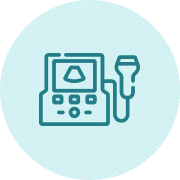
Cranial Ultrasound
A physician or specialist may also suggest genetic or metabolic testing.
Since cerebral palsy is usually identified around the first or second year of life, a pediatrician will be looking for signs such as delayed walking, delayed talking, and other developmental or learning delays.
A full evaluation for cerebral palsy may be ordered and performed by specialists such as developmental pediatricians, child neurologists, pediatric psychiatrists, pediatric rehabilitation providers, or neurodevelopmental pediatricians.
The Gross Motor Function Classification System is used to classify those with cerebral palsy based on their current gross motor abilities, functions, and limitations. It also considers the possible need for wheeled mobility or assistive technology.

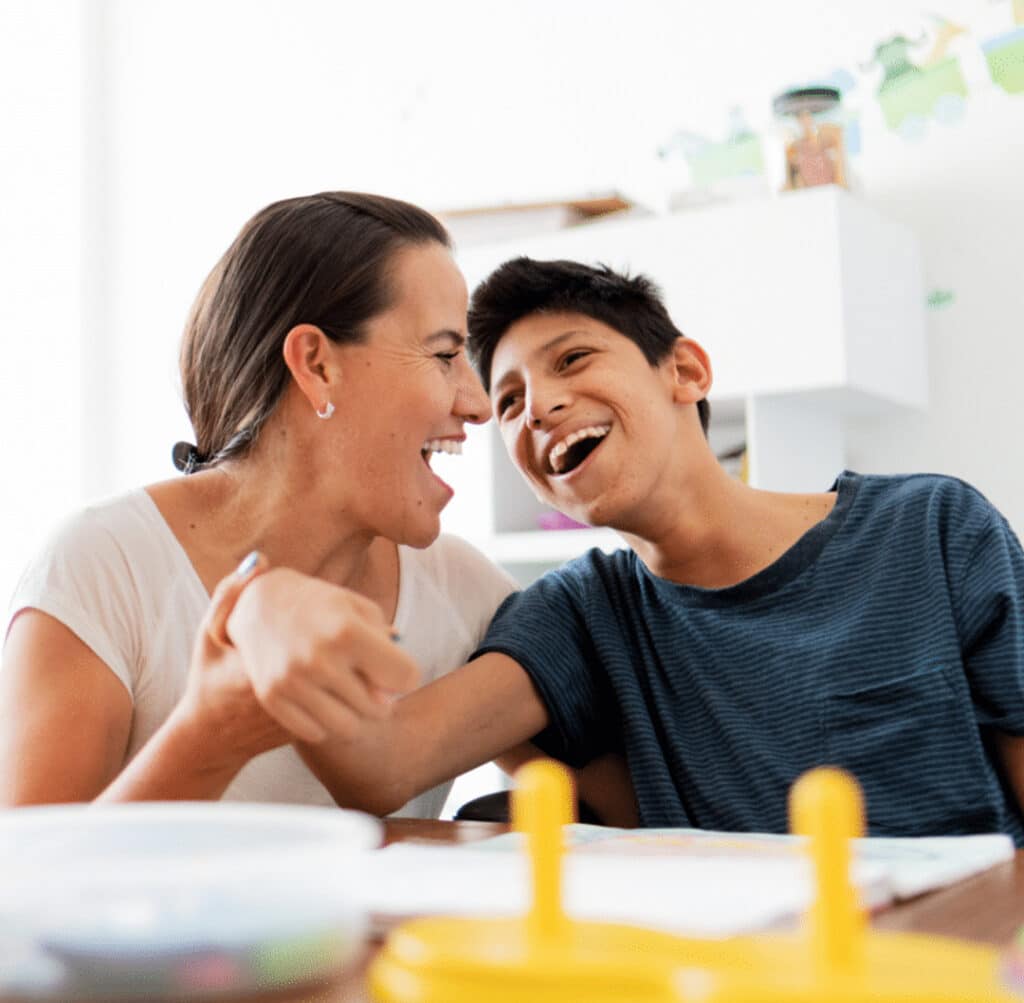

Early Signs and Symptoms of Cerebral Palsy
The early signs and symptoms of cerebral palsy may be broken down into three categories.
- Developmental delays
- Abnormal muscle tone
- Abnormal posture
Parents are the first line of defense when it comes to diagnosing this condition. They may notice that their child is not developing as quickly as others in the same age range or that their child appears stiff. Unusual movements or posture may lead a parent to bring up concerns with their child’s physician, which can result in a cerebral palsy diagnosis.
There are several early signs and symptoms of cerebral palsy. In babies under six months of age, it is common for parents to notice unusual muscle tone. The baby may be unusually stiff, or they may be floppy.
The baby’s legs may also become stiff when picked up, or their legs may scissor or cross. The head may appear to lag when a parent picks up the child from lying on their back, too.
Once a child is over six months of age, signs and symptoms may include the inability to roll over in either direction, difficultybringing their hands to their mouth, and reaching out with only 1 hand while keeping the other hand in a fist.
A child with cerebral palsy who is more than 10 months old may exhibit lopsided crawling, meaning they push off with on hand and leg while dragging the opposite hand and leg,or the inability to stand even while using an object for support.
It is important to note that not all developmentally delayed children will have cerebral palsy. Some may have a different genetic, metabolic or developmental syndrome that mimics CP. Some infants, particularlythose who were born prematurely, may just need more time to develop.
As soon as a medical professional makes the diagnosis, a team of health care professionals should work with a child to help them reach their full potential. They may need assistive medical devices and supports such as braces or a wheelchair. They may need surgery or medication. Therapies, such as occupational, speech, and physical therapy, may also help them.
There isn’t a single treatment that is the best for every child with cerebral palsy. That’s why it is necessary to talk to the child’s doctor about the possible treatment options for the specific symptoms that the child is experiencing. The treatments for cerebral palsy are largely supportive, and interventions may be used to make a child’s life easier or safer.
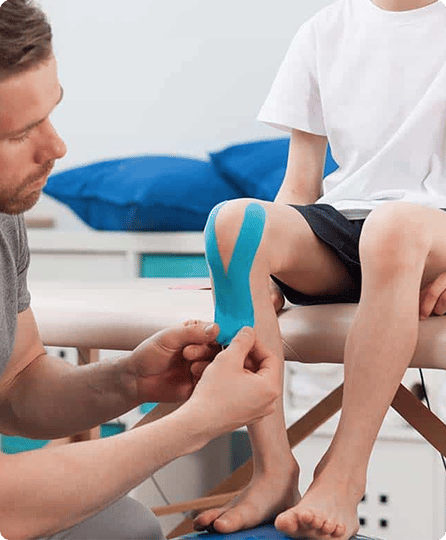
Caring for a Child with Cerebral Palsy
Children with cerebral palsy don’t always have profound disabilities. In many cases, the diagnosis won’t affect life expectancy at all. This is important as the severity of a child’s condition will influence which long-term treatments and therapies are used.
Treatments may include:
- Physical and occupational therapy
- Medications to control seizures
- Medications to control muscle spasms
- Pain medications
- Orthotic devices, such as rolling walkers and wheelchairs, communication aids, and voice synthesizers
- Speech therapy, which can help with problems with drooling or eating as well as speaking.
- Surgery to correct anatomical abnormalities
- Surgery to correct and release tight muscles
To learn more about cerebral palsy and the options for treating and managing this condition, check out the following resources.
Except in the most severe cases, children with cerebral palsy usually have a typical life expectancy and can manage many activities with assistive support.
Center for Disease Control and Prevention: 11 Things to Know about Cerebral Palsy (cdc.gov)
American Academy for Cerebral Palsy and Developmental Medicine (aacpdm.org)
Mayo Clinic: Cerebral Palsy Overview (mayoclinic.org)
American Pregnancy Association: Cerebral Palsy (americanpregnancy.org)
Center for Disease Control and Prevention: CDC’s Developmental Milestones (cdc.gov)
Center for Disease Control and Prevention: Important Milestones: Your Baby By Six Months
Written by:
Birth Injury Center Team
The Birth Injury Center aims to create informational web content and guides to help women and their families seeking support and guidance for birth injuries caused by medical negligence. All of the content published across The Birth Injury Center website has been thoroughly investigated and approved by medical expert Natalie Speer, RNC-OB, Attorney Ryan Mahoney.
